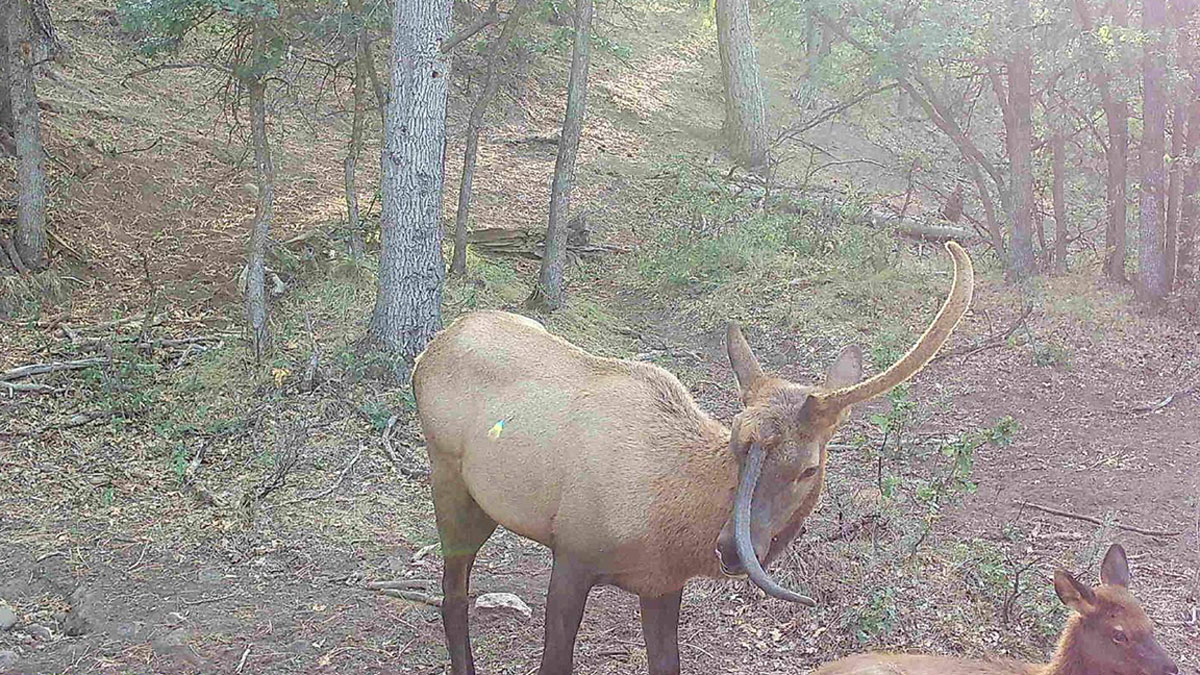It’s just not something you see every day. A trail camera in central Washington recently captured an image of what some call a unicorn elk. Of course, it’s not really a unicorn but it does have what would/should be its left antler instead coming out of the middle of its head right between the eyes. How does that happen?
Digging through the archives of the Rocky Mountain Elk Foundation’s Bugle magazine shows trauma is the most common factor. If a velvet tine is bumped or broken but still attached to the beam, it can grow at wide angles, forming peculiar “kickstands” or other irregularities. And it may very well remain that way for the rest of their lives.
Scientific evidence also links damage to an animal’s body and its antler growth. For example, an injury to an animal’s left shoulder will typically result in a rack malformed on the right side. Biologists speculate that this relationship is a structural adaptation of the head to reestablish bilateral balance. Injury to an animal’s testicles both in velvet and bone stages, can produce antlers that are never shed.
Other primary factors are genetics and nutrition. Genetic mutations, such as forked dagger tines, are passed along from generation to generation and become either commonplace – and subject to further mutation of shape – or the exception, eliminated through natural selectin. Abundance of forage can produce massive well-developed antlers, while lack of forage stunts antler growth.
(Photo credit: David Kauer)
